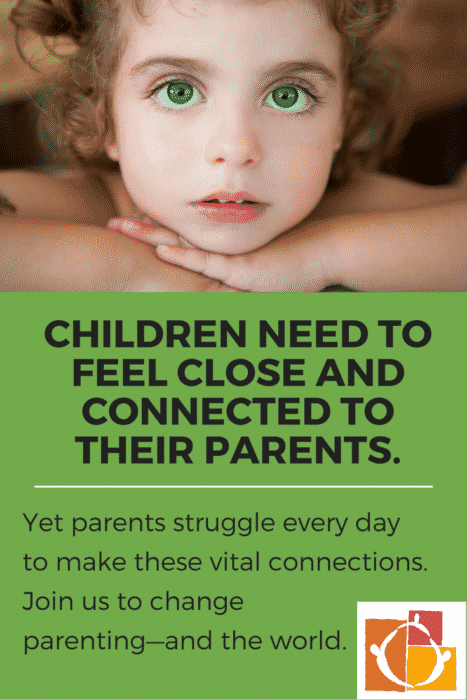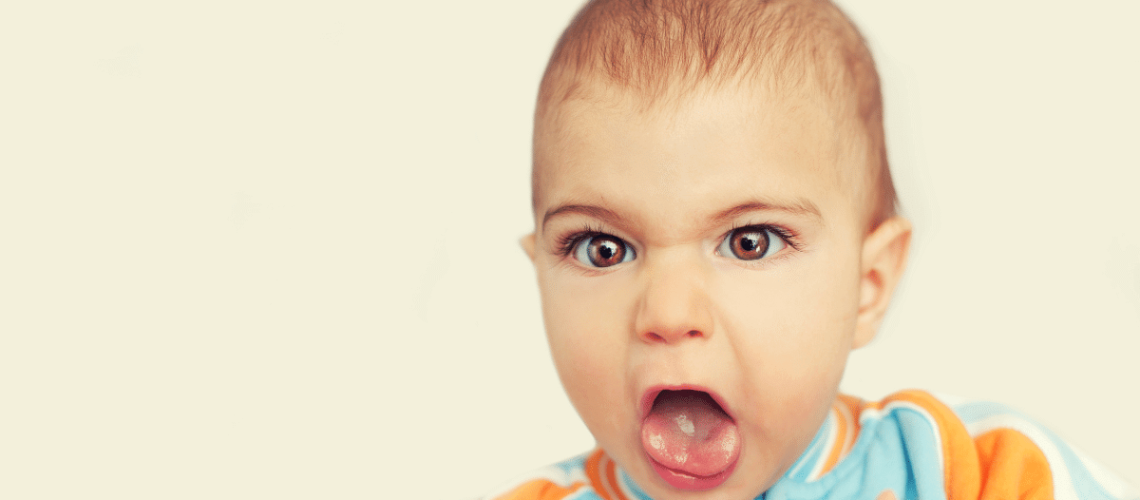What helps a child's aggressive behaviour?
We’ve all been there, either as the affronted parent of a child that’s been pushed in the playground, or as the embarrassed, guilty parent of a child that’s done the pushing or shoving.
What makes a toddler or young child hit, bite, or lash out?
The perspective that has helped my family greatly is that an aggressive child is a frightened child. Aggression is the associated “fight or flight” response that leads a child to act out.
Unless there is an immediate threat, the fear most likely comes from another incident from some time back in the child’s past.
Patty Wipfler, Founder of Hand in Hand Parenting, says, “A child can’t tell you, ‘I feel afraid for my life, just like when I got stuck in the birth canal for three hours.’ She will simply show panic or outrage whenever another child crowds too close to her. She won't say, ‘I feel scared, the same way I did when I cut my head last year.’ But when you try to help her with a scraped knee, she’ll kick you and demand that you leave her alone.”
When a child's aggressive behaviour appears repeatedly, he is gripped by some old fears or upset that got stuck in his limbic brain, the seat of his long term memory, some time ago.
The emotion from that incident didn’t get processed at the time. But when an incident in the present has the feel of the original upset, that same emotion flares again. It overrides a child’s prefrontal cortex, where impulse control, reasoning, short-term memory and verbal skills take place.
So your child's aggressive behaviour appears because he is in ‘fight or flight’ mode, and simply can’t reason or co-operate.
He isn’t able to control his impulse to fight back or kick out no matter what you say.
What can be done to stop a child from lashing out?
 Children need clear, loving limits as soon as their behaviour goes off track. Connect with your child!
Children need clear, loving limits as soon as their behaviour goes off track. Connect with your child!
Your child can recover his ability to act thoughtfully as soon as he once again feels safe and connected. You have the power to bring him under your wing again!
One great way to work with your child’s aggressive behaviour when they pop up at home is what we call the “Vigorous Snuggle.” You move in warmly to make playful but vigorous physical contact, and you go for the laughs.
Physical affection and play is something that your child’s limbic system, the social and emotional centre of his mind, can understand.
And his laughter helps release the lighter side of the fear he’s struggling with. You can read all about this in more detail in “The Vigorous Snuggle” on the Hand in Hand website.
For example, let’s say your child comes up with a provocative behavior – say a little slap. You respond with warmth and a, “Hey, that’s a wild little hand! Come here, you wild little hand, you. Let me see if I can tame you. Niiiice hand. Sweeeet little hand!” As your child giggles and continues to try to hit, you keep her hand from hurting you. But instead of scolding or ordering her to stop, you let her laugh and playfully show you the impulses she feels. The harder she tries to slap, the more vigorously you snuggle her back.
You provide your child with the safety to show you the difficult feelings she carries below the surface. And you keep yourself from being hurt, and at the same time you build the sense of connection she needs in order to feel close to you again. The more you can help your child laugh, the more tension she can release. And the less impulsive she will become over time. A good fifteen minutes of this kind of play can release a lot of the tension that drives the hitting behavior. For more on children who hit a parent or caregiver, see “What to Do When Your Toddler Hits You: A New Perspective.”
Limits and safety are vital for to help a child's aggressive behaviour
Don’t let your child hurt you or anyone else when she is acting aggressively, not only because of the impact on others, but because she will feel worse, too. If your toddler is predictably prone to hitting or biting at playgroup, or with a particular friend, warmly, kindly, and clearly bring the limit before anyone gets hurt. Place a hand on the child’s stomach and go with her where she goes, ready to pull her back in case she begins to lash out.
Similarly, one loving Mum I know has worked hard on helping her child to release aggressive feelings caused by early trauma. She makes sure there’s something she can grab to put between her and her child if he is lashing out. She uses a pillow. If your child is bigger, perhaps an impromptu “crash mat” like a camping mattress can be used to contain the hitting, but allow for connection at the same time.
A child's aggressive behaviour may need to be expressed in crying and fighting hard to allow these gripping feelings to air and disappear. Having a caring adult listen to the emotional turmoil helps a child get free of the hard job of managing fear. It helps a child relax. So expect to do some listening, and to offer your warm caring in the midst of a very emotional time. It’s a huge relief to a child to be prevented from hurting another person or other child.
And it’s healing for your child to be able to show how wild with fear you feel, and have mum or dad stick with you through the storm.
What happens when you get there too late?
Parents wonder how to be with both children if one child is already hit and hurt? As you move in, remember that both children are hurting really badly. If you can’t get there before one child has hurt another it can help ease the aftermath of feelings by acknowledging your role as the adult: “I’m sorry I couldn’t get there sooner to help you with these feelings,” can relieve the child who done the hitting of the additional baggage of guilt. And of course listen with love and kindness to the tears or fury of the child who got hurt.
You may wonder why a child who has just lashed out at a sibling or a good friend appears to shut down or is unable to show any remorse. In fact, children don't want to hurt one another! The blank face, the “I don’t care” attitude, is a way to cover up a swamp of big, frightening guilty feelings that get stirred up in a child when she finds herself hitting or kicking out.
Don’t be fooled by the impassive expression! Bring a limit with as much warmth and softness as you can when a child is hitting or kicking. For example, you could put your arm gently around the aggressor and saying something like, “I’ll help you stop. I know you don’t want to hurt Kevin.” Then stay there and listen. Your patience and faith in her goodness will help her to have the good cry she needs to release the feelings that caused the trouble in the first place.
Will this work?
Any child has a right to be safe in their own home. But when we offer caring toward a child who hits or hurts another, we’re not condoning aggressive behaviour. Far from it! We’re finding ways to ensure no more aggression gets spilled out on any child – or adult.
We parents need ways to support our children when fear grips them, but we often get triggered, and become aggressive ourselves when one child hurts another! It is vital for us as parents to find non-judgemental Listening Partners where we can share our own hurt, frustration, rage and anger about our child’s aggressive behaviours, or alternately, about how our child has been bullied, so that we can bring warmth, together with firm limits and caring, to the children we love when aggressive behaviour pops up.
Of course we parents worry that if we show warmth and even humour when a child is acting aggressively, he won’t learn to govern his behaviour. This concern is rooted in the idea that the child who lashes out is choosing to do so. In fact, the child who hits out feels trapped an emotional corner, and is in what Patty calls an “emotional emergency.”
Some small trigger has unleashed a huge fear, and the child feels like he’s fighting for his life. He hasn’t chosen his reaction–it has overcome him. You can trust that your child, once connected and able to reason again, wants to co-operate, wants to show compassion, wants to be at peace within himself.
I have seen this over and over again with my own children.
When I move in and bring a warm but clear limit and find the patient, gentle capacity to Staylisten, or when I find a way to make a connection through Playlistening, my children turn around and respond with love and compassion.
I am so moved by this process of recovery in my kids that I share these ideas with you with complete confidence. The many helpful articles and blogs on the Hand in Hand website (see especially, ‘The Vigorous Snuggle,” “Helping Children with Aggression,” and the on-line self-guided class, “No More Hitting”) will lead you out of the aggression cul-de-sac.
If we as parents choose to fight fire with fire when our children lash out, we fuel the aggression that sometimes seems, on the world stage of adult interactions, to threaten us all.
When we find ways to bring loving limits, keep each other safe, and get listening time for ourselves, we can respond in ways that don’t leave our children festering with more painful or frightening feelings, feelings that are bound to bubble out elsewhere down the track.
A postcard I saw recently with a picture of a newborn held in loving hands said, “The future in our hands.” That’s the truth of it.
We parents each hold the future of our world in our hands. Together, by responding with warmth, humour and loving limits we can change the world piece by peace. Together, we can change the world one Vigorous Snuggle at a time!
Save

